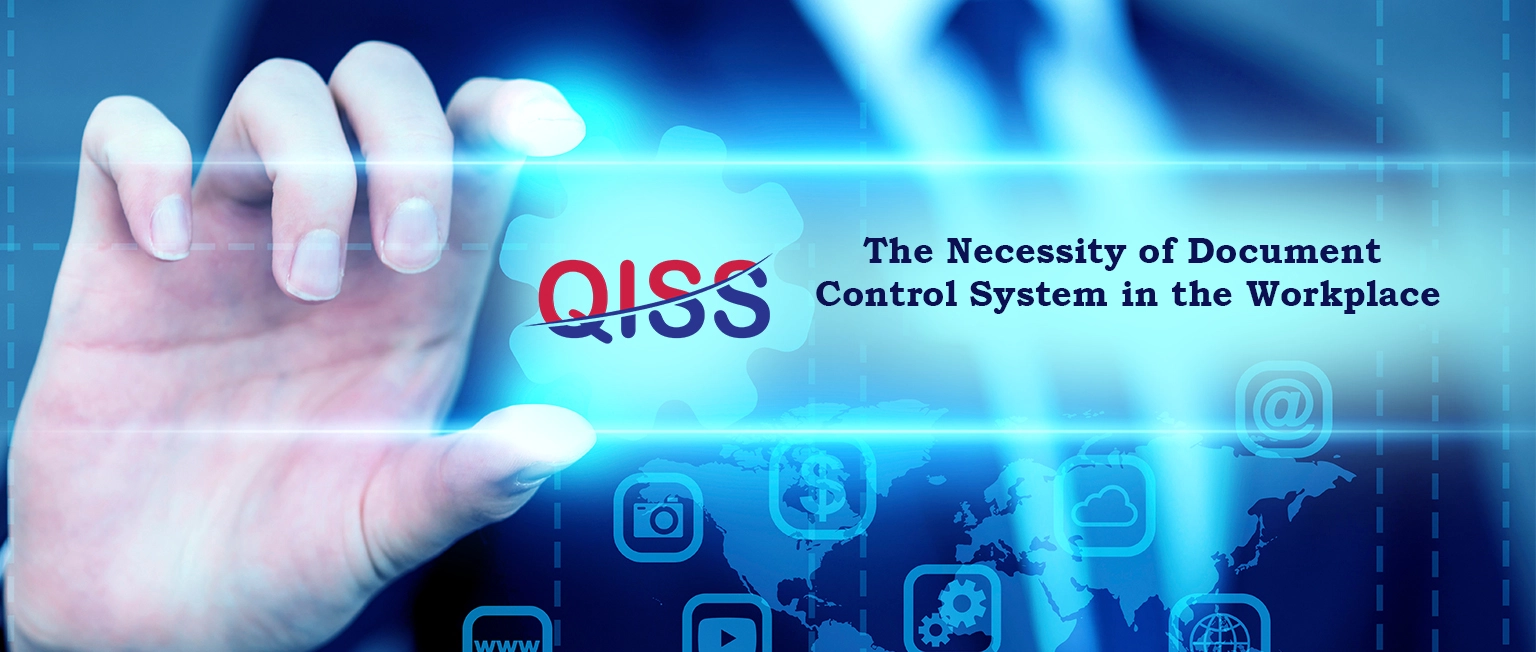
A document control system will help an organization ensure that its most important documents are written, reviewed, sent, and stored in an organized manner. Using a document control system makes things less confusing than they would be without it. They are meant to help a company organize itself better along with offering better products. The size of your organization doesn't matter if you want Quality management. You need to use tools that save time, money, and space. Handling documents manually is a pain-stricken process. The process is time-consuming. Any important document can go missing as a human always makes mistakes. Manual document management can lead you to lose money and require an unnecessary workforce. In industries with many rules, document control software is a must-have for businesses. It's a unique way to keep track of documents that show compliance with Environmental protection agency & Occupational safety & health administration rules, state laws, voluntary standards like ISO, and contractual obligations.
Why should a business owner use Document Control?
The document Control software can save you from all the risks of losing files or being destroyed. Papers can be lost, stolen, and destroyed by human hands or natural disasters. DMS helps authorized persons to view, share, and store any important document from any place at any time. One only needs to worry about the internet connection, especially if the DMS is cloud-based.
What exactly is involved in document control?
Standard activities and processes related to DC in most businesses include:
• Maintaining many versions of an item (version control)
• Revision
• Approval
• Distribution
• Documents that have been replaced (cancellation)
How could a document control system help your company?
When researching document control systems for a highly regulated organization, compliance is undoubtedly on your mind. DCS reduces regulatory risk. The right solution can improve data protection, visibility, operational uptime, etc. The benefits of document control are many. Some of the benefits of document control are given below:
Information security
Most of your company's files contain crucial data you'll need occasionally. Theft, fire, or flood can misplace, damage, or destroy paper records. Physical recordings decay over time, requiring frequent duplication.
A DC solves these problems. No physical documents mean no misappropriation. When using a cloud-based service, your digital files will be safe. Otherwise, your data is safe because you decide who sees which files.
Improved workplace efficiency
Physically storing a company's records and files is time-consuming. The process of sharing, and storing documents is tedious. Overall, your staff will be less productive. Finding a file in a stack also bringing it to the right person's desk is inefficient. A DMS lets you send any file to anyone in seconds. Because employees won't have to look for files physically, your team will have more time.
Save storage space
The price of commercial real estate as well as the cost of archiving paper records continue to rise. A software-based DMS is advantageous to any business since it may free up valuable floor space by eliminating the need for physical storage solutions like filing cabinets, boxes, and bins. A secure offsite warehouse or vault may be a more cost-effective option if paper records must be retained.
Keeping tabs on documents
Software monitoring document access can tell you who has read which files in your company. This is a crucial piece of security equipment for entrepreneurs to use to protect the privacy of their proprietary information.
Recovering former versions of a document
You should be able to see who made changes to a document. A DMS that keeps track of revisions and provides restoration choices is an ideal DMS. With versioning, users can see precisely when and by whom changes were made to documents. It can quickly revert to a previous version.
Remote work's perks
You can access cloud-based files from any internet-connected device during any hour. You don't have to be at the office to view your files. This is an excellent bonus as telecommuting becomes more common.
View restrictions on important files
These days, storing them in a closed filing cabinet or protecting an Excel spreadsheet with a password is not enough. Document control software is a method of managing who has access to which documents. Only authorized individuals can access, modify, and delete files.
Cost friendly
The benefits of buying the program will more than justify the investment. First, paper and supplies will cost less. Eliminating the old technique of managing files increases efficiency and money due to higher employee output.
Implementing a DC: Best Practices
To use the Document software system in the workplace, you can follow the steps below:
Form a group to handle the successful execution of DC
It will need teamwork to implement a new digital DCS for your company successfully. The best implementation teams have members from a variety of divisions so that they can effectively represent the needs of the entire company rather than just one division.
Current Documents Review
There can be plenty of documents in each department that get stacked up throughout the time. Your selected teams should do an internal audit to make sure of a few things:
• Document time management
• Document relevance
• Relation between the document owner and business
Assign responsibilities for each document to a specific person
Somebody needs to be the "document owner" of each file. This person is responsible for writing the document, distributing it to the correct departments, and keeping it up-to-date with any necessary changes or additions.
Find out who must see the file
A DC streamlines the distribution of documents throughout a company. Knowing who needs access to the document before adding it to the system is important. The document's creator must provide evidence of:
• Is it sufficient if just a few people have access to the document, or should everyone be able to see it? Examples: (e.g., Company Policy)
• Can only one division use this document? (For instance, a guide on using a pension scheme)
• Is the file role-dependent? (Consider an Example Employee Handbook)
• Are specific geographic coordinates required for this document? (e.g., legislation on Workplace safety)
Learn the workflow
In contrast to the paper-based approach, the digital procedures for document management you implement will be more streamlined and automated. When you begin importing documents into your document control, you will also begin setting up your workflows.
Into the DC system
The time has come to begin adding documents to the DMS since all the necessary groundwork has been laid. The owner of a given document should upload it to the system, where they can create it, specify its workflow needs, and assign it to the proper personnel. Based on specified DC specifications, workflows and document needs will be automated.
Communication is essential
Emails that leave you scratching your head are the worst. However, this is nullified by establishing that the wider business is aware of a modification in your paper's procedure. Your mode of interaction with clients will change according to the nature of your company.
Digital technology has helped businesses move quickly. As pioneers embrace new technologies, followers will follow suit. When a firm grows, so do its paper and digital records. No matter its niche, every firm may benefit from document management and control. Document control will preserve your documents in good condition when things get chaotic. A personalized DMS customized to your business will help simplify content management and streamline business processes. Working with a reliable service provider to establish a DC solution that includes a thorough DMS is a great way to boost productivity. To keep your firm successful and competitive, you need a custom DC that fits your needs. QISS by QIA will not only help with your Document control but also guide your company to get certified by ISO.




.png)

